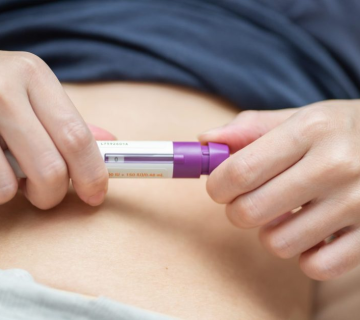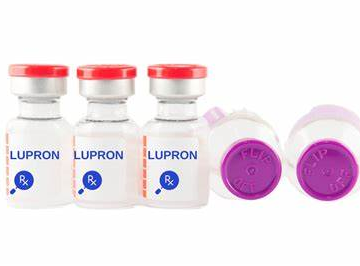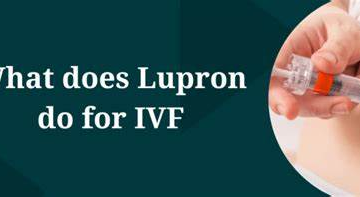
How Many Follicles Are Needed for IVF?
So, you’re thinking about IVF (in vitro fertilization) and wondering, “How many follicles do I need for this to work?” You’re not alone—tons of people ask this question when they’re starting their fertility journey. Follicles are those little sacs in your ovaries that hold eggs, and in IVF, they’re kind of a big deal. But here’s the kicker: there’s no one-size-fits-all answer. It’s not like baking where you need exactly two cups of flour. It depends on you—your age, your body, and even a bit of luck.
In this article, we’re diving deep into everything you need to know about follicles and IVF. We’ll break down what follicles are, why they matter, how many you might need, and what the latest research says. Plus, we’ll tackle stuff other articles often skip—like what happens if you have too many follicles or how lifestyle tweaks can give your ovaries a boost. Let’s get started!
What Are Follicles, and Why Do They Matter in IVF?
Imagine your ovaries as a garden. Inside that garden, follicles are like tiny seed pods, each holding an egg that could grow into a baby. Normally, your body picks just one “winner” each month to release during ovulation. But in IVF, doctors want more than one egg to increase your chances of success. That’s where fertility drugs come in—they’re like super-charged plant food, encouraging your ovaries to grow multiple follicles at once.
Why Follicles Are the Star of the Show
In IVF, eggs are collected from mature follicles, mixed with sperm in a lab, and turned into embryos. More follicles mean more eggs, which means more shots at creating a healthy embryo. But here’s the catch—not every follicle has a usable egg, and not every egg becomes an embryo. So, the number of follicles you start with sets the stage for everything else.
The Science Bit
Research shows that follicles need to reach about 14-20 millimeters (mm) in size to contain a mature egg ready for retrieval. Smaller ones might not be ready, and bigger ones could be past their prime. Doctors use ultrasound to watch them grow, making sure they hit that sweet spot.
Real Talk
Think of it like fishing. More follicles are like casting a wider net—you’re more likely to catch something good. But just like fishing, it’s not a guarantee. Quality matters as much as quantity, and we’ll get into that later.
How Many Follicles Are “Enough” for IVF?
Here’s the million-dollar question: how many follicles do you need for IVF to work? Most online articles toss out a range like 8-15 and call it a day. But let’s dig deeper—because “enough” depends on a bunch of factors.
The Typical Goal: 8-15 Follicles
Doctors often aim for 8-15 mature follicles during an IVF cycle. Why? Studies—like one from the Journal of Assisted Reproduction and Genetics—suggest this range gives you a solid chance of getting enough eggs (around 6-10) to work with. From there, about 70-80% might fertilize, and a few could become healthy embryos.
-
- ✔️ Why it works: This number balances success with safety. Too few, and you might not get a viable embryo. Too many, and you risk complications like Ovarian Hyperstimulation Syndrome (OHSS).
-
- ❌ The downside: It’s not a magic number. Some people get pregnant with fewer, while others need more.
What the Numbers Really Mean
Let’s break it down with a simple example:
-
- You start with 10 follicles.
-
- Maybe 8 have mature eggs (not all follicles deliver).
-
- Of those, 6 fertilize into embryos.
-
- After growing for 5 days, 2-3 reach the blastocyst stage (the good stuff).
If one of those implants in your uterus, boom—pregnancy! But if you only start with 3 follicles, the odds shrink fast.
Expert Insight
Fertility specialist Orion Nightingale says, “Eight to fifteen follicles is a great target for most patients, but I’ve seen cycles succeed with as few as three. It’s about working with what your body gives us.”
What Affects How Many Follicles You Get?
Your follicle count isn’t random—it’s influenced by a mix of things you can’t control and some you can. Let’s unpack the big players.
Age: The Biggest Factor
Your ovaries have a built-in egg supply that drops as you age. By your 30s, it’s already shrinking, and by 40, it’s a steeper hill to climb.
-
- Under 35: You might see 10-20 follicles with stimulation.
-
- 35-40: More like 5-15.
-
- Over 40: Could be 1-5, or even fewer.
Research from the American Society for Reproductive Medicine (ASRM) backs this up—younger women tend to grow more follicles and have better egg quality.
Ovarian Reserve: Your Starting Point
This is how many eggs you’ve got left in the tank. Doctors check it with:
-
- AMH (Anti-Müllerian Hormone): A blood test that hints at your egg stash. Higher AMH = more follicles.
-
- Antral Follicle Count (AFC): An ultrasound counting resting follicles early in your cycle. 15-30 is a good sign.
Low AMH or AFC? You might struggle to get more than a few follicles, even with meds.
Lifestyle: Small Changes, Big Impact
Your habits can nudge your follicle count:
-
- ✔️ Sleep: 7-8 hours a night helps hormone balance.
-
- ✔️ Diet: Leafy greens, lean protein, and healthy fats (like avocado) support egg health.
-
- ❌ Smoking: Cuts your follicle response by up to 30%, per a 2023 study in Fertility and Sterility.
-
- ❌ Stress: High cortisol can mess with ovulation.
Meds and Protocols
Fertility drugs like FSH (follicle-stimulating hormone) are the rocket fuel. But the dose and type (short protocol, long protocol, etc.) depend on you. Too little, and you get skimpy follicles. Too much, and you’re in OHSS territory.
Too Few Follicles: What Happens?
What if your ultrasound shows just 2 or 3 follicles? Don’t panic—it’s not game over, but it changes the playbook.
The Risks of Low Numbers
-
- Fewer eggs: Less to work with in the lab.
-
- Cancellation: If you’ve got under 3-4 follicles, some clinics might call off the retrieval. Why? The odds of success drop below 10%, per recent data.
-
- Natural IVF: Some switch to a no-stimulation cycle, grabbing just one egg. Success rates hover around 5-10%, though.
What You Can Do
-
- Adjust Meds: Ask your doctor about tweaking the dose or adding drugs like Clomid.
-
- Donor Eggs: If your ovaries aren’t cooperating, using younger donor eggs bumps success rates to 50-60%.
-
- Mini IVF: A gentler approach with lower doses, aiming for 3-5 follicles. It’s cheaper but less effective.
A Real-Life Example
Sarah, 38, had 3 follicles in her first cycle. Only 1 egg fertilized, and it didn’t implant. She switched to donor eggs for round two and got pregnant. Sometimes, it’s about finding the right path.
Too Many Follicles: Is That a Problem?
Now, what if you’ve got 20, 30, or more follicles? It sounds like a win, but hold up—it can backfire.
The OHSS Trap
Ovarian Hyperstimulation Syndrome happens when your ovaries go overboard. Symptoms include bloating, pain, and in rare cases, serious fluid buildup. It’s triggered by too many follicles (usually 20+), especially if you’re young or have PCOS (Polycystic Ovary Syndrome).
-
- Stats: About 1-5% of IVF cycles end in moderate to severe OHSS, says the CDC.
-
- Fix: Doctors might delay the trigger shot or freeze embryos instead of transferring them fresh.
Quality vs. Quantity
More follicles don’t always mean better eggs. A 2024 study in Human Reproduction found that cycles with over 25 follicles had lower fertilization rates—too many eggs can dilute quality.
Expert Tip
Ophelia, a reproductive endocrinologist, warns, “Patients with 30 follicles might cheer, but we’re watching for OHSS. It’s a tightrope—maximizing eggs without tipping into danger.”
Follicle Quality: The Unsung Hero
Numbers get all the hype, but follicle quality is the real MVP. A single golden egg can beat a dozen duds.
What Makes a Good Follicle?
-
- Size: 14-20 mm is ideal for a mature egg.
-
- Egg Health: Chromosomes need to be spot-on. Older eggs (from women over 35) are more likely to have glitches.
-
- Hormone Levels: Estrogen spikes (200-300 pg/mL per follicle) signal readiness.
How to Boost Quality
-
- CoQ10: This supplement might improve egg energy, per a 2023 trial. Try 200-600 mg daily—ask your doc first.
-
- DHEA: For low responders, 75 mg daily could up follicle health, says small studies.
-
- Avoid Toxins: Pesticides and plastics can hurt egg quality. Go organic when you can.
Step-by-Step: How Follicles Fit into IVF
Let’s walk through an IVF cycle to see where follicles come in. It’s like a recipe—every step counts.
Step 1: Stimulation (Days 1-10)
You inject FSH to wake up those follicles. Ultrasounds track their growth every few days.
Step 2: Monitoring (Ongoing)
Doctors measure follicle size and count. Goal: 8-15 at 14-20 mm.
Step 3: Trigger Shot (Day 10-12)
When follicles are ready, you get an hCG shot to ripen the eggs.
Step 4: Retrieval (36 Hours Later)
A needle guided by ultrasound scoops eggs from mature follicles. You’re sedated—no worries!
Step 5: Lab Magic
Eggs meet sperm. Embryos grow for 5-6 days. Then, one (or two) gets transferred to your uterus.
Latest Research: What’s New in 2025?
Science doesn’t sit still, and 2025 has some fresh insights on follicles and IVF.
Personalized Protocols
A study in Reproductive Biology and Endocrinology found that tailoring FSH doses to your AMH and AFC boosts follicle yield by 20%. No more one-size-fits-all!
AI Predictions
New AI tools can predict follicle growth with 85% accuracy, cutting guesswork. Clinics are rolling this out now.
Low-Responder Hope
For women with 1-4 follicles, a 2024 trial showed “duo-stim” (two stimulations in one cycle) doubled egg counts. It’s niche but promising.
Practical Tips to Maximize Your Follicles
Want to give your ovaries a fighting chance? Here’s how:
Before Your Cycle
-
- ✔️ Eat Smart: Load up on antioxidants—berries, nuts, spinach.
-
- ✔️ Exercise: 30 minutes of walking or yoga daily keeps hormones happy.
-
- ❌ Cut Caffeine: Over 200 mg (2 cups of coffee) might lower follicle response.
During Stimulation
-
- ✔️ Stay Hydrated: 8-10 glasses of water daily helps your ovaries.
-
- ❌ Don’t Skip Shots: Timing is everything—set alarms!
After Retrieval
-
- ✔️ Rest Up: Take it easy for 24-48 hours to avoid OHSS.
-
- ✔️ Ask Questions: How many eggs? How many fertilized? Know your numbers.
Common Questions Answered
“Can I Get Pregnant with Just 1 Follicle?”
Yes, but it’s a long shot. Success rates are under 10% with one egg. Still, it happens—nature loves a curveball.
“What If I Have PCOS?”
PCOS means lots of follicles (20-40+), but they’re often immature. Your doc might use a milder protocol to avoid OHSS.
“Does More Follicles = Twins?”
Not directly. Multiple embryos transferred cause twins, not follicle count. Most clinics stick to one now.
The Emotional Side: Coping with Follicle Counts
IVF isn’t just science—it’s feelings, too. Seeing a low follicle count can hit hard, like a punch to the gut. Here’s how to handle it.
Lean on Support
Talk to friends, a counselor, or an online group. You’re not alone.
Reframe the Numbers
Expert Caspian Sterling says, “A low count isn’t a verdict—it’s a starting point. We’ve got options.” Focus on what you can do.
Celebrate Small Wins
Three follicles? That’s three chances. Cheer every step.
Wrapping It Up: Your Follicle Game Plan
So, how many follicles do you need for IVF? Aim for 8-15, but know that 3 can work, and 30 might be too much. It’s a numbers game with a twist—quality, your age, and a sprinkle of science all play a part. Work with your doctor, tweak what you can, and keep your eyes on the prize.
Let’s Chat!
What’s your follicle story? Drop a comment below—did you get 5 or 25? How’d it go? Or ask me anything—I’m here to help!




No comment